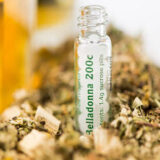What Is Menstruation Explain Class 8
Menstruation is a natural process that happens in girls and women once they reach a certain age. It’s when the body sheds the lining of the uterus, which is a part of the female reproductive system. This happens about once a month and can last for a few days.

The menstrual cycle is controlled by hormones in the body, which are produced by the ovaries. These hormones make the lining of the uterus thicker, in case a fertilized egg needs to attach to it and grow into a baby. If the egg isn’t fertilized, the lining is no longer needed, so the body gets rid of it through the vagina.
During menstruation, girls and women use special products like pads or tampons to absorb the menstrual blood and keep their clothes clean. It’s important to change these products regularly to prevent infection and stay clean.
Menstruation is a normal and healthy part of a girl’s or woman’s life, and it means that their body is working the way it should be. It’s nothing to be ashamed of, and everyone should treat menstruating people with respect and kindness.
What is Menstruation?
Menstruation is the breakdown of the uterus’ endometrial lining and blood vessels, resulting in a liquid that is expelled through the vaginal canal commonly known as a period, and is a natural physiological process that occurs in reproductive-aged females.
It is the shedding of the inner lining of the uterus, called the endometrium, which occurs approximately once a month in preparation for a potential pregnancy.
During menstruation, blood and other materials from the endometrial lining are expelled through the vagina over a period of a few days. Menstruation is controlled by hormones in the body, specifically estrogen, and progesterone, which are produced by the ovaries in a cyclical manner.
The onset of menstruation is often seen as a sign of puberty and typically continues until menopause, which is the permanent cessation of menstrual periods.
What is Menstruation in 10 points?
- Menstruation is a natural process that occurs in reproductive-aged females.
- It is the shedding of the endometrial lining of the uterus, which occurs approximately once a month.
- Menstruation typically lasts between 3-7 days but can vary for individuals.
- The menstrual cycle is controlled by hormones, specifically estrogen and progesterone.
- Menstruation is a sign of reproductive maturity and typically begins during puberty.
- The first menstrual period is called menarche and typically occurs between the ages of 10-15.
- Menstruation is a necessary process for reproductive health and fertility.
- Menstrual blood may vary in color and consistency throughout the menstrual cycle.
- Menstrual products, such as tampons and pads, are used to manage menstrual flow.
- Menstrual hygiene is important to prevent infection and promote overall health.
What is the Menstrual cycle?
The menstrual cycle is a series of hormonal and physiological changes that occur in the female reproductive system over a period of approximately 28 days. It is controlled by a complex interplay of hormones that originate in the brain, ovaries, and uterus.
The menstrual cycle is divided into two phases: the follicular phase and the luteal phase. The follicular phase begins on the first day of menstruation when the lining of the uterus is shed.
This triggers the release of hormones that stimulate the growth and development of follicles in the ovaries. Eventually, one follicle becomes dominant and releases an egg in a process called ovulation.
The luteal phase begins after ovulation and is marked by the transformation of the remaining follicle into the corpus luteum, which produces hormones that help maintain the uterine lining in preparation for a potential pregnancy.
If the egg is fertilized, it implants into the uterus and pregnancy begins. If the egg is not fertilized, the corpus luteum breaks down, hormone levels drop, and the uterine lining is shed, resulting in menstruation.
The length and regularity of the menstrual cycle can vary between individuals and can be influenced by factors such as stress, illness, and hormonal imbalances. Keeping track of the menstrual cycle can be helpful for predicting ovulation and fertility, as well as identifying potential health issues.
Menstrual cycle in 10 points
- The menstrual cycle is a physiological process that occurs in reproductive-aged females.
- It involves a series of hormonal and physiological changes that prepare the uterus for pregnancy.
- The menstrual cycle is controlled by the hypothalamus and pituitary gland in the brain, which release hormones that stimulate the ovaries.
- The cycle begins on the first day of menstruation when the lining of the uterus is shed.
- The follicular phase follows, during which follicles in the ovaries mature and prepare to release an egg.
- Ovulation occurs when a mature egg is released from the ovary and travels to the uterus.
- The luteal phase follows ovulation, during which the remaining follicle transforms into the corpus luteum, which produces hormones that help maintain the uterine lining.
- If the egg is fertilized, it implants into the uterus and pregnancy begins.
- The egg is not fertilized, the corpus luteum breaks down, hormone levels drop, and the uterine lining is shed, resulting in menstruation.
- The menstrual cycle typically lasts around 28 days but can vary between individuals and be influenced by factors such as stress and hormonal imbalances.
























